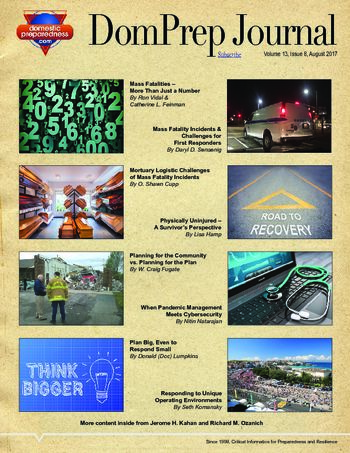

Plan Big, Even to Respond Small
Donald (Doc) Lumpkins
August 9, 2017
In emergency planning efforts, there is much debate about whether to plan for the worst and scale down, or plan for current threats and scale up. Of course, in complex systems, small changes in initial conditions can have profound effects. By considering larger, low-frequency events, communities can overcome this challenge and be better prepared for disasters of all sizes.

Wearable Sensors for Chemical & Biological Detection
Richard Ozanich
August 9, 2017
One of the strengths of the Pacific Northwest National Laboratory (PNNL) is the ability to conduct comprehensive technology foraging and objective assessments of various technology areas. This article highlights leading research by others in the area of chemical and biological (chem/bio) detection that could be further developed into robust, highly integrated wearables to aid preparedness, response, and recovery.

Preparing for High-Impact, Low-Probability (HILP) Events
Jerome H. Kahan
August 2, 2017
The interconnected global environment can increase the number of vulnerabilities as well as the destabilizing effects of both natural and human-caused disasters. As such, when a high-impact, low-probability event occurs, the consequences can be devastating. To prepare for such events, planners must observe trends, predict futures, and create scenarios for better mitigating any potential threat.

